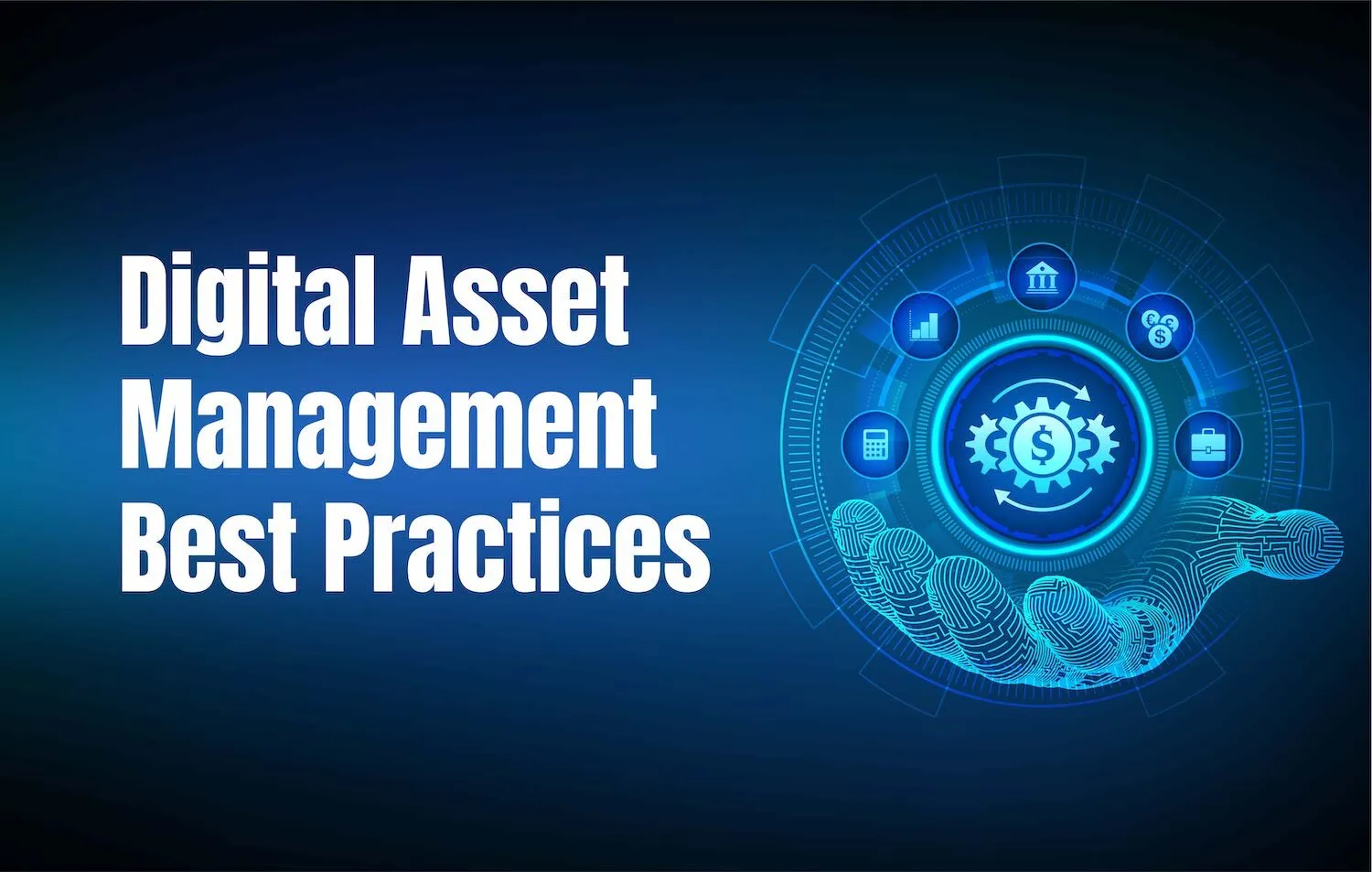7 Digital Asset Management (DAM) Best Practices for 2023

Imagine that you are the Marketing Head responsible for the launch of a new product. You have numerous product pictures, videos, advertising copies, and brand assets spread over multiple discs, folders, and cloud storage services. However, amidst all the files, finding the correct content becomes a tedious and time-consuming task for you. Not only does this lead to missed deadlines, but it also creates enormous data mismanagement.
Thus, one of the best ways to turn your unorganized data into a practical and well-run system is by harnessing the power of Digital Asset Management (DAM).
DAM is a way of organizing and storing your files on a common platform to streamline digital assets and enhance their value. With a rise in online businesses and remote work, the demand for DAM systems has increased in all segments and industries.
In this article, we will delve into some of the best practices that can help your business get ahead by using this system.
Define Key Goals and Objectives
Before installing a DAM system, it is crucial to outline your goals and define your objectives. It will help you align the DAM system with your vision and generate desired outcomes.
By understanding what needs to be done with your digital assets, you can tap the capabilities of DAM systems effectively and ensure that the system can fulfill your goals. It can act as a roadmap and guide you toward making more informed and better decisions.
Organize and Structure Metadata
To ensure the effective organization and availability of digital material, it is vital to create an elaborate metadata plan. This plan usually encompasses information related to your digital assets, such as keywords, tags, categories, file type, details of management, etc.
Curating a metadata plan can help users identify which files would be compatible with their software, ease the task of looking for specific files and folders, and create an easier process for searching and retrieving data.
Ensure Secure Access
DAM solutions coordinate the efforts of numerous teams and departments of an organization.
Thus, adding a layer of security to files and folders that are being accessed by everybody is critical to ensure the
privacy and safety of the company.
With a DAM system, you can define roles and permissions and designate particular assets or campaigns to specific members or even to a single department. This allows you to restrain access to private or confidential data and ensure that only permitted members can view or edit such files.
If there is an unauthorized user trying to access the files, they are directly put on a waiting list for approval. Thus, security breaches or data leaks are prevented.
Provide Training and Support
As the world globalizes and companies adapt to newer technologies, it is critical for them to upskill their personnel as well. Thus, for a DAM installation to be effective, it is necessary for every organization to provide ample instructions and support to all its users.
This can be done by conducting periodic training sessions for employees, creating user manuals, and providing them with resources such as Frequently Asked Questions (FAQs) and readable material.
You can also deliver a presentation covering all aspects of this system to educate your employees. And if you don’t have enough time to create and design a presentation from scratch, you can look for pre-designed and editable Digital Asset Management slides.
A designated technological team must also be set up to answer queries and questions of the staff related to DAM systems and their use.
Build Your Work Around DAM System
Constructing your workflow around your DAM platform is one of the smartest ways to boost productivity and improve efficiency in your organization.
These systems provide a plethora of automation tools such as task assignment and tracking, commenting, live chatting, as well as integrated approval processes. Utilizing cloud-based processes effectively enables your team and all of your partners to complete projects within stipulated timelines and foster a sense of teamwork.
Harness the Power of DAM Platforms to Collaborate on Projects
Managing projects can seem like a daunting task. From curating designs with team members to gathering feedback from clients, the process involves massive communication.
When you use DAM platforms to collaborate on projects, you can save much of your time as all project-related data, information, and assets are located in one place. It also eases the task of maintaining the same quality across all projects, as everything is centrally available.
Let us understand this with the help of an example - imagine that your team of multiple members is working on a design campaign for a client. The project involves numerous graphics, including videos, images, documents, etc., which must be discussed and collaborated upon. Here, DAM platforms can enable you to share ideas and communicate on projects. They can allow you to create chat channels, brainstorm ideas, and discuss critical topics. It can ensure a collaborative environment and allows all members to be of the same mind.
Utilize Analytics from Your DAM to Guide Asset Production
DAM systems have stunning analytical capabilities that can provide valuable insights and statistics which can help in asset production. They can gather information on user metrics, such as the number of file downloads, views, shares, etc., on various files and analyze which documents are being used more. They can also help you identify the gaps in your assets by examining asset popularity and demand trends. Thus, you can fill the void and create digital assets that are actually required.
Conclusion
Efficient Digital Asset Management is necessary for companies to harness the potential of their digital assets and reach their optimal goals. It can help businesses streamline processes, decrease costs, and launch campaigns in no time. As the DAM system continues evolving, investing in it today will add value to your business in the coming years. So, take your move!